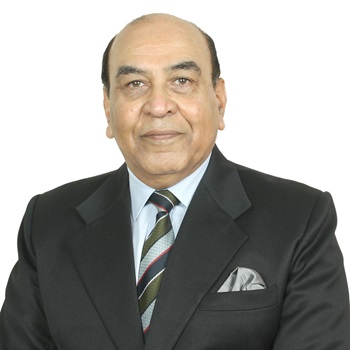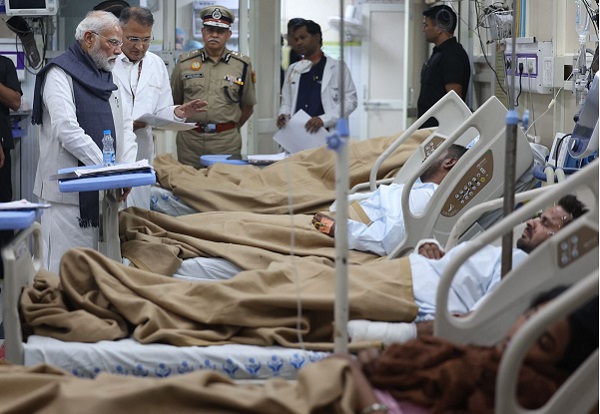.png)

Lt Gen Syed Ata Hasnain is a former Commander of India’s Kashmir Corps and Chancellor of the Central University of Kashmir.
November 13, 2025 at 7:40 AM IST
The Red Fort explosion has already generated wide commentary — on intelligence, on coordination, on vigilance. Yet the real story may not lie in the blast itself, but in the profile of those behind it. The discovery that the alleged module comprised doctors and medical professionals marks a disturbing evolution in India’s internal security landscape.
For decades, the anatomy of terrorism in Jammu & Kashmir followed a familiar pattern.
The overground worker —the facilitator, the logistics man, the ideological amplifier — was often a white-collar sympathiser, an educated professional with separatist leanings, a journalist, teacher, or minor government functionary. The gunman, by contrast, was typically drawn from the underprivileged, semi-educated youth of the countryside.
The overground worker acted as a bridge, enabling operations, financing, shelter and propaganda, yet rarely crossed the line into direct violence. It was a division of labour that intelligence agencies understood well. The radical elite provided ideological scaffolding; the radicalised poor provided the cannon fodder.
The events surrounding Dr Umar’s death, and the wider module of doctors uncovered in Delhi and Lucknow, now break that old pattern. For the first time, we are seeing professionals move from facilitation to execution, from the periphery to the core. This is not a coincidence; it is a strategic innovation by Pakistan’s proxies and affiliated groups like Jaish-e-Mohammad.
Why Doctors? Why Now?
The answer lies in survivability and invisibility. Doctors are among the least suspected professionals in India. Their social respectability and the ethics of their profession make them appear above political scrutiny. They can move freely, maintain networks across states, and command public trust, qualities that make them invaluable to organisations seeking to relocate terror operations from borderlands to the anonymity of cities.
There is also a psychological dimension. Medical training cultivates precision, composure, and the ability to work under stress, all attributes transferable to clandestine work. When radicalised, such professionals can become exceptionally efficient operatives, combining conviction with capability in ways the ideologically unsteady foot soldier does not.
It would be a mistake to see this as a one-off aberration. The Jaish and Lashkar-e-Taiba have long studied urban infiltration strategies. They recognise that urban India, with its diversity and density, offers both camouflage and consequence — the ability to hide easily and the potential to shock the national psyche when struck.
The emergence of the overground worker-turned-terrorist hybrid changes the security equation in several ways. First, it erodes the traditional social indicators that guided intelligence profiling. When a doctor, lecturer, or civil servant becomes a potential operative, the very premise of “suspicious behaviour” loses meaning. Second, it complicates community-based intelligence. Ordinary citizens are unlikely to suspect professionals in their midst. Third, it signals that the line between ideological sympathy and operational participation is blurring — a trend long visible in West Asia, now taking root here.
The case of Dr Shaheen from Lucknow, reportedly forming a women’s cell under JeM’s guidance, reinforces the pattern. Radicalisation within educated, urban women, especially those with professional independence, represents a strategic deepening of terror outreach. Women offer both concealment and legitimacy to such networks, especially in conservative social milieus where scrutiny is lower.
Between the Silences
This, more than anything, should concern security planners. A failed attack implies not the end of a campaign but the presence of a larger design still in play. The strategic logic is simple; you do not expose a cell of educated operatives unless multiple cells exist.
Delhi and the northern urban belt — Lucknow, Jaipur, Chandigarh — are once again emerging as areas of interest for hostile intelligence agencies. The motive is clear: to shift the theatre of perception. After years of setbacks in Kashmir, Pakistan’s handlers need to demonstrate reach, unpredictability and persistence. Urban terror, even when sporadic, achieves what infiltration cannot: fear without a front line.
This is why the coming months, leading up to sensitive commemorative dates like December 6 and Republic Day, demand heightened vigilance. But vigilance alone is not enough. Community-based intelligence, which performed admirably during the 2008–2011 phase of urban terror, must be revived, albeit with caution. Citizen awareness should not degenerate into profiling or false suspicion. The balance between alertness and restraint is delicate but essential.
Three elements differentiate this emerging phase of terrorism from earlier ones.
- First, its demographic inversion — the educated replacing the impoverished as foot soldiers.
- Second, its operational migration — from the open conflict zones of Kashmir to the crowded anonymity of cities.
- Third, its technological adaptation — radicalisation through encrypted networks, digital propaganda, and online recruitment.
These features make the new phase more insidious and less predictable. It is also more resilient; dismantling one cell will not dismantle the ecosystem that nourishes it.
Global Precedents
Each model offers a fragment of what India now needs: an integrated counter-radicalisation architecture that balances deterrence with inclusion. Without moderate and nationalist clergy to guide, interpret, and contextualise, counter-radicalisation programs do not gel.
What India faces now is not just a security challenge but a psychological frontier. Terrorism today is as much about symbolism as violence. The recruitment of doctors and professionals carries a chilling message; no section of society is immune.
But it also calls for perspective. India’s social fabric remains resilient, and such cases, while alarming, are still rare. Yet rarity should not breed complacency. A single network of ideologically driven professionals can inflict disproportionate damage, not only through violence but through the narrative of fear it creates.
Response to Anticipation
At the same time, urban policing must evolve to balance technology and trust. Surveillance systems, facial recognition and digital forensics have their place, but the essence of prevention will remain human — awareness, empathy and early intervention.
The Red Fort episode reminds us that terrorism is evolving faster than our mental models of it. This is a war not of territory or ideology alone, but of identity and perception. The enemy now wears a stethoscope, not camouflage, and quotes scripture, not slogans. Recognising that shift — and responding with intelligence, restraint and imagination — will define India’s preparedness for the battles ahead.



